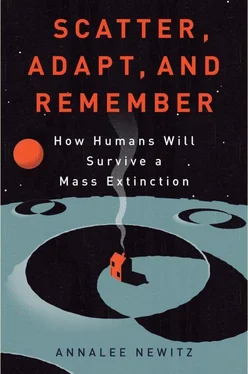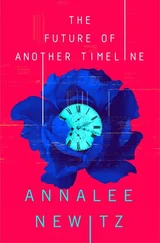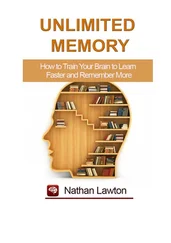This is exactly the question that people from many diaspora groups have raised over the past half century. Perhaps nowhere is the answer to it more beautifully expressed than in the book The Black Atlantic: Modernity and Double-Consciousness , by Guyanese-British scholar Paul Gilroy. While researching the often fragmented histories of blacks in England, Gilroy realized that he should reframe black identity as a hybrid experience that combines many cultures. To describe the origin of this experience, he called on the idea of a “black Atlantic,” the geographical region where African slaves were scattered in a forced diaspora across Europe and the Americas. Instead of having a single point of origin, like the lands around Jerusalem, Gilroy’s diaspora has many origins. And its survivors are genetic and cultural hybrids. But that doesn’t mean African identities have been extinguished in people outside Africa today. It has survived in a multitude of ways, though some of them might be unrecognizable to communities who lived in Africa half a millennium ago.
As Ostrer put it, diaspora is about where you come from, but it is also about where you end up. Our journeys change us radically, but when we settle down again there is a continuity, a shared history that holds us together. Jews and Africans are not unique in this respect—many groups have maintained a sense of community through times of hardship and separation. Recent human history teaches us that your group has a better chance of surviving in the long term if you’re willing to divide into groups and go your separate ways to safety. But that doesn’t mean the past is lost. What makes a book like The Black Atlantic so important is Gilroy’s powerful assertion that even if your group is unwillingly torn apart and assimilated into other cultures, your progeny will remember where they came from even hundreds of years from now.
The Passover ritual makes a similar assertion. It is a celebration of identity forged in diaspora, and a reminder that survival often means finding a new home. The difficult part, as we face an uncertain future, is how to understand the meaning of “a new home.” We may have to look very far afield to get our answers. In fact, one of the greatest stories of survival through adaptation does not come from humans at all. It comes from the humble blue-green algae, whose incredible history may also show us one possible path into the future.
11. ADAPT: MEET THE TOUGHEST MICROBES IN THE WORLD
YOU’VE PROBABLY CALLED it scum. But that slimy blue-green goo floating in ponds and on the ocean comes from a group of species so hardy that humanity’s fumbling attempts to adapt to our environments would be a joke to them. Well, it would be if these blobs of raw biological productivity had a mean sense of humor, or brains, or even mouths to laugh with. We’re talking about our old friend cyanobacteria, whom we met billions of years ago, in the first chapter of this book. At that time, it was busily unleashing enough oxygen to transform the composition of Earth’s atmosphere. Its subsequent 3.5-billion-year career as a life-form proves that this ancient breed of scum has gotten something fundamentally right. Cyano, as it is fondly known among scientists, evolved one of the planet’s greatest adaptations: photosynthesis, or the ability to convert light and water into chemical energy, releasing oxygen in the process.
Cyano has also had a secondary career as a biological building block for other life-forms. About 600 million years ago, sometime before the first multicellular life appeared, cyano began forming symbiotic relationships with other organisms, slowly merging with them over the millennia. Eventually these early cyano evolved inside other cells to become chloroplasts, tiny organs (known as organelles) that handle photosynthesis for plant cells. Every plant on Earth is, in fact, the result of this merging process. You can think of chloroplasts as both engines and batteries for plant cells; photosynthesis creates forms of energy that plants can use immediately as well as store for later. Cyano’s great adaptation is so powerful that plants and even a few animals like sea anemones have survived by absorbing cyano and turning it into their own adaptation.
Brett Neilan, a biologist at the University of New South Wales, has spent his life studying cyano among the ancient rocks of Australia’s coastline, and he thinks the secret to the algae’s success is simple. Cyano’s ancestors won the evolution game because they worked with what the Earth always had in good supply: sunshine, or some form of light, and water. Like most plants, cyano are called autotrophs, a word that means “self-feeding,” and refers to their ability to feed themselves without consuming other organisms. In a sense, cyano generate the food they consume. As a result, they can and do live everywhere. They’ve been found in Antarctica and in the boiling, acidic waters of Yellowstone’s geysers. Not only are they seemingly impervious to dramatic temperature changes, but they are virtually immune to famine as well. According to Neilan, cyano prevent themselves from starving in times of scarcity by storing extra nutrients like nitrogen in little sacs tucked inside their cellular walls. If these food caches are not enough, cyano can go into stasis. The microbes put themselves into a kind of suspended animation and can endure without food for years, waiting out droughts or other disasters that affect their food supply.
Cyano have other incredible abilities, too. They can live as individual single-celled organisms, but they can also join together with other cyano, Mighty Morphin Power Rangers–style, to form a multicellular creature. They are the simplest organism on Earth whose biological processes are regulated by the circadian rhythms of light and dark. Like humans, with our sleeping and waking cycles, cyanobacteria engage in different metabolic activities depending on whether it’s day or night. This allows them to engage in two separate chemical processes for nourishment—photosynthesis and nitrogen fixation—which would normally interfere with each other. Thanks to their circadian clocks, cyano can do photosynthesis by day and nitrogen fixation by night. They thus benefit from two kinds of nutrient production. Other plants benefit, too. Just as some organisms absorbed cyano to create choloroplasts, others have formed symbiotic relationships with the bacteria to reap the benefits of the energy produced by nitrogen fixation.
Cyano have succeeded so well on Earth because they create their own food, using a power source that is ubiquitous and sustainable. It’s such a good strategy that other life-forms learned from cyano’s success millions of years ago and absorbed these tiny engines into their own fuel-production processes. Humans may not be able to merge with cyano on a biological level—at least, not with current levels of technology—but many scientists are working on ways we could use photosynthesis to create more sustainable energy sources to help humans survive as a mass society.
Why Is Photosynthesis So Awesome?
One of these scientists is physicist-turned-biologist Himadri Pakrasi, who runs Washington University’s International Center for Advanced Renewable Energy and Sustainability (I-CARES). With a thatch of curly black hair just beginning to turn gray and a ready smile, Pakrasi radiates enthusiasm for his work. The first time I spoke to him, by phone, it was to find out how his lab had managed to create energy using water, light, and bacteria. “You should come out here and see!” he exclaimed. Very few scientists would invite a writer they’d never met before to visit their labs, but Pakrasi is the kind of guy who wants to get people engaged with his work—even strangers from halfway across the country. It was easy for me to understand how he’d built up a large international group of collaborators at Washington University, including scientists, city planners, and engineers.
Читать дальше






![Аннали Ньюиц - Автономность [litres]](/books/424681/annali-nyuic-avtonomnost-litres-thumb.webp)





